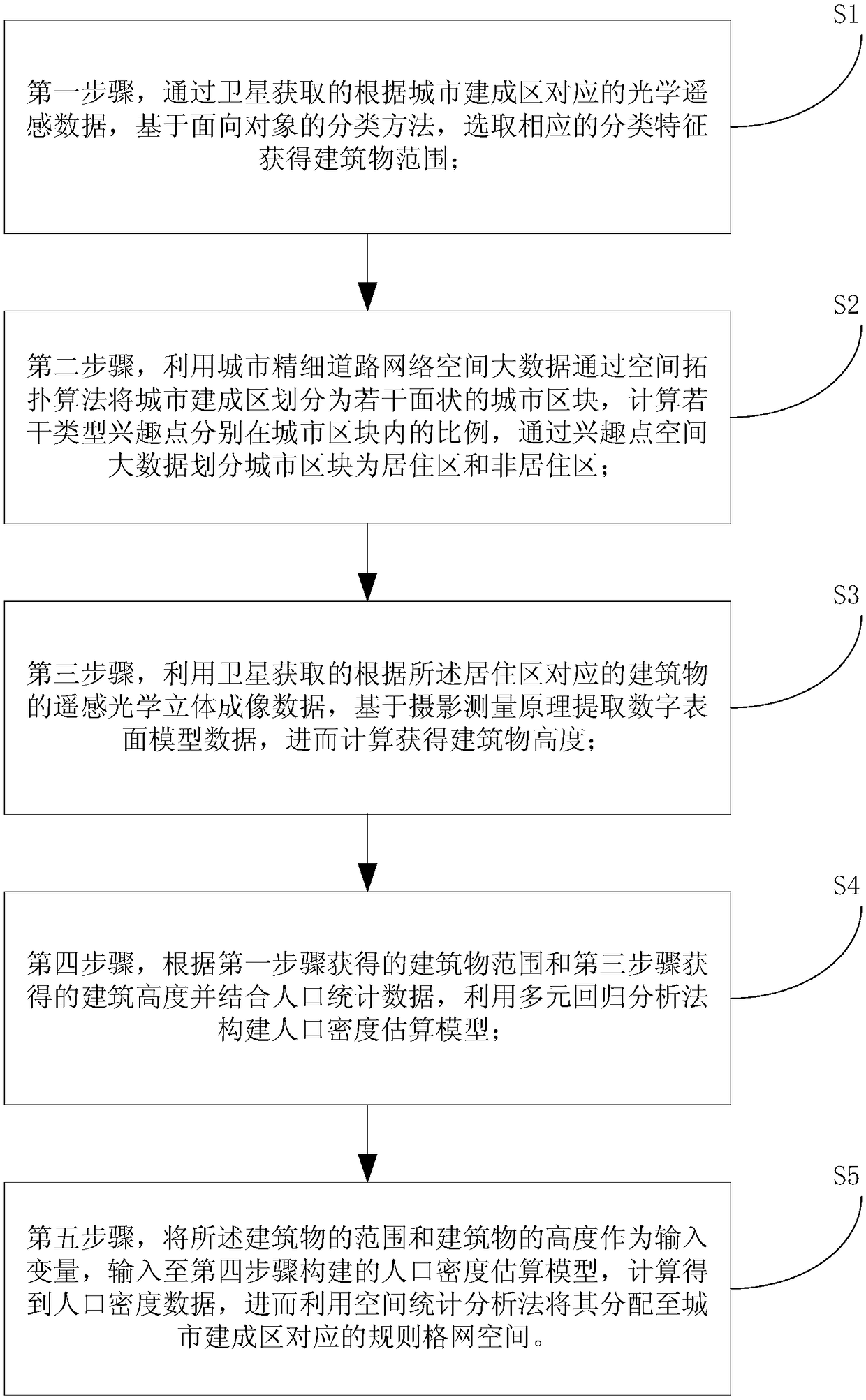Method and system for estimating population density in urban built-up areas by cooperation with spatial big data
A technology of population density and built-up areas, applied in the field of urban remote sensing and urban demography, can solve the problem that population spatialization products cannot accurately describe the actual spatial distribution characteristics of the population in urban built-up areas
- Summary
- Abstract
- Description
- Claims
- Application Information
AI Technical Summary
Problems solved by technology
Method used
Image
Examples
Embodiment Construction
[0045] The present invention will be described below in conjunction with the accompanying drawings.
[0046] The present invention relates to a method for estimating the population density of urban built-up areas with spatial big data collaboration, and its flow chart is as follows figure 1 As shown, the method includes the following steps: S1: Obtain the range of buildings based on the object-oriented classification method based on the optical remote sensing data corresponding to the urban built-up area obtained through satellites; S2: use the urban fine road network space big data to map The urban built-up area is divided into several planar urban blocks, and the urban blocks are divided into residential areas and non-residential areas through spatial big data of points of interest; S3: the remote sensing optical stereoscopic view of the buildings corresponding to the residential areas obtained by satellite Obtain the building height from the imaging data; S4: According to t...
PUM
 Login to View More
Login to View More Abstract
Description
Claims
Application Information
 Login to View More
Login to View More - R&D
- Intellectual Property
- Life Sciences
- Materials
- Tech Scout
- Unparalleled Data Quality
- Higher Quality Content
- 60% Fewer Hallucinations
Browse by: Latest US Patents, China's latest patents, Technical Efficacy Thesaurus, Application Domain, Technology Topic, Popular Technical Reports.
© 2025 PatSnap. All rights reserved.Legal|Privacy policy|Modern Slavery Act Transparency Statement|Sitemap|About US| Contact US: help@patsnap.com



